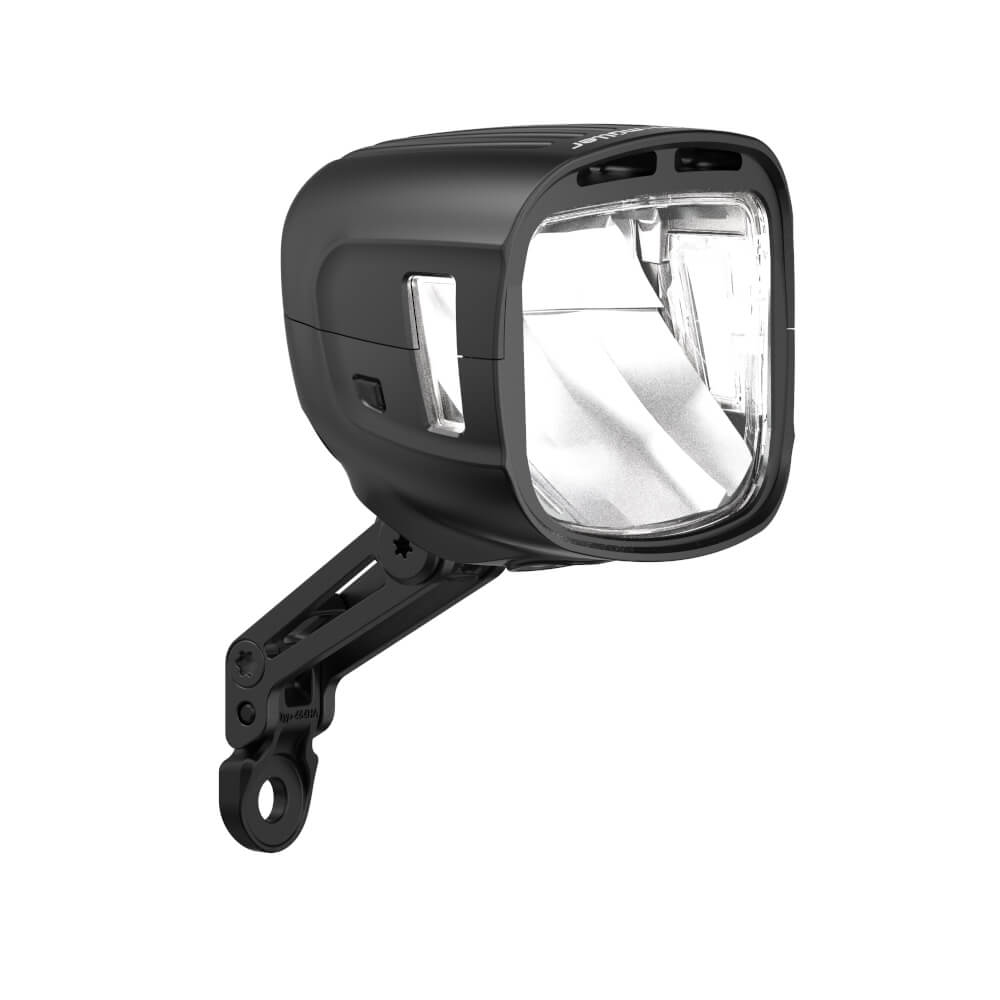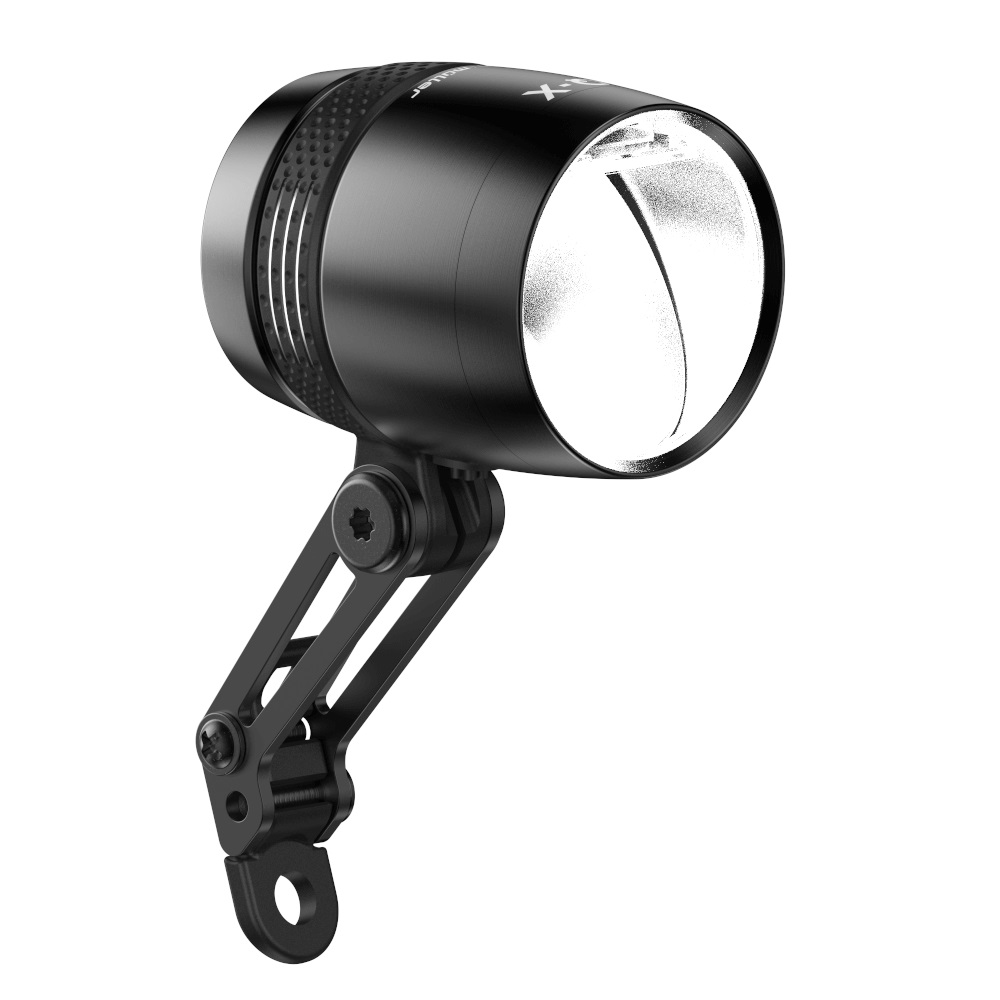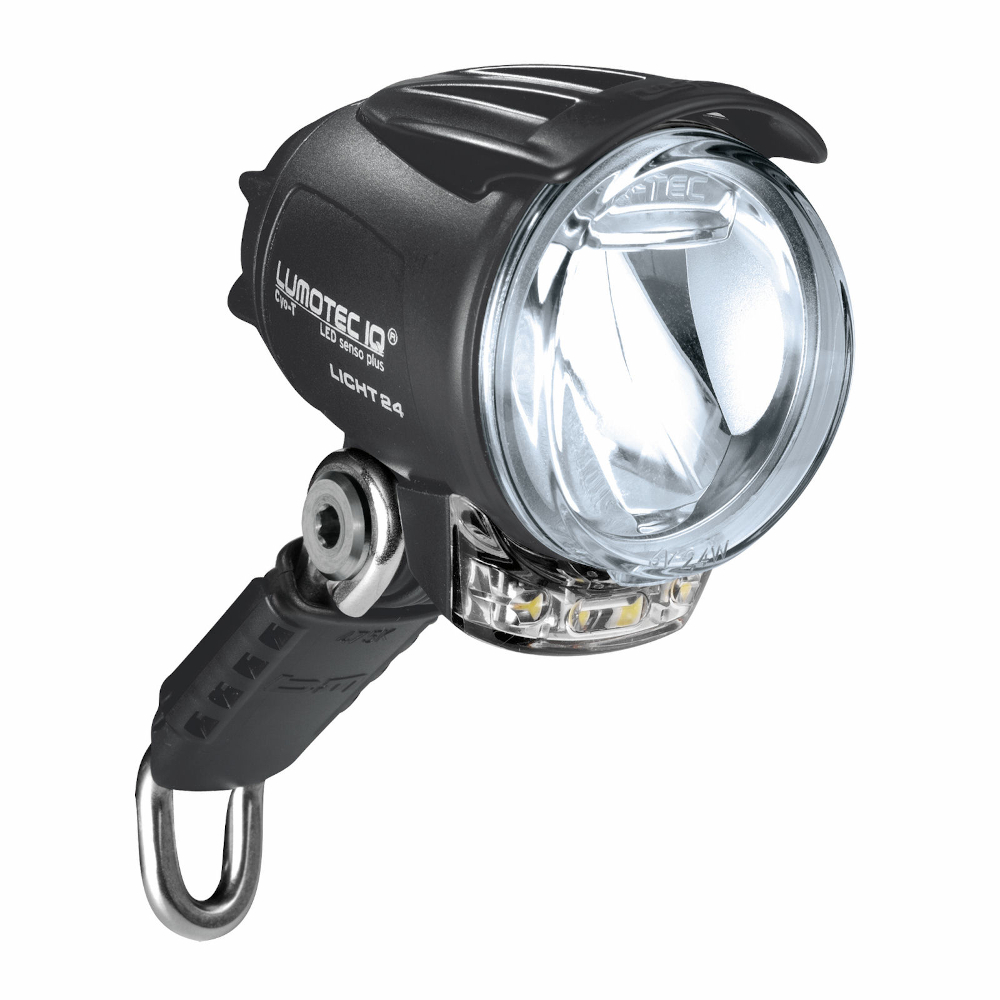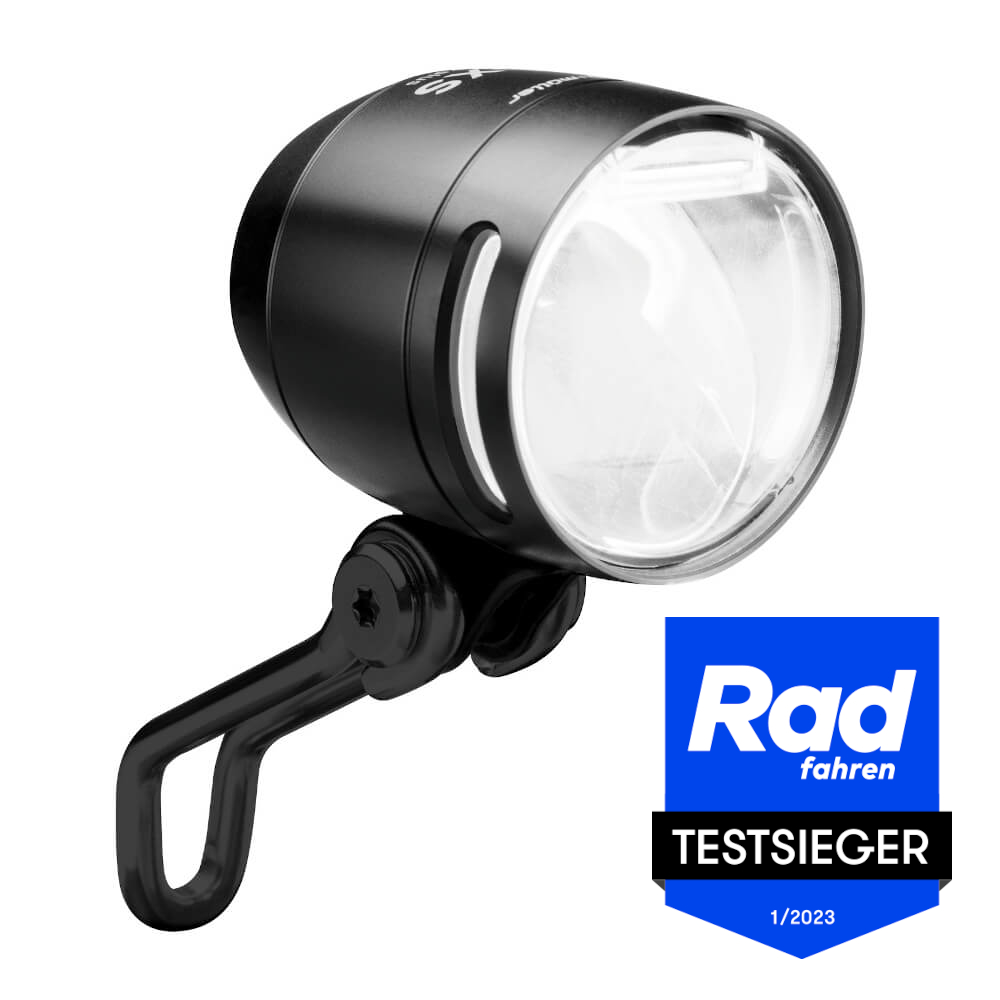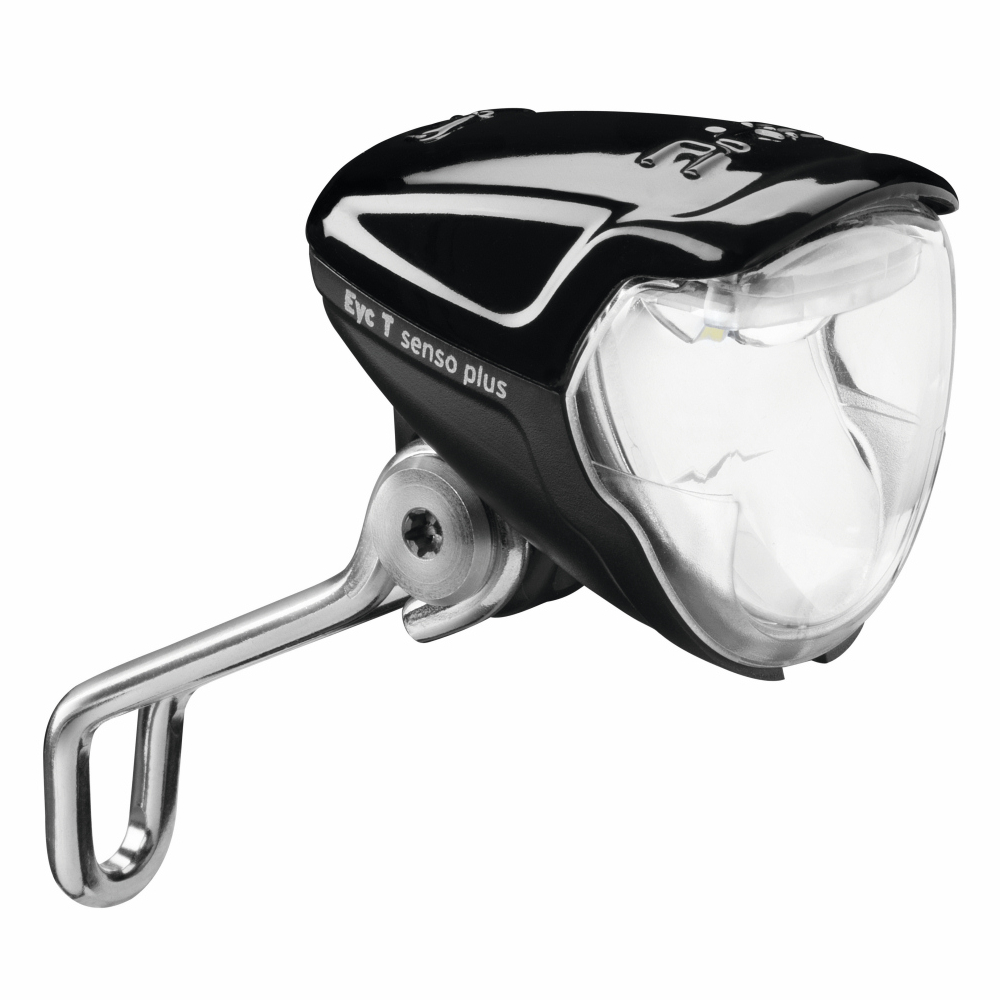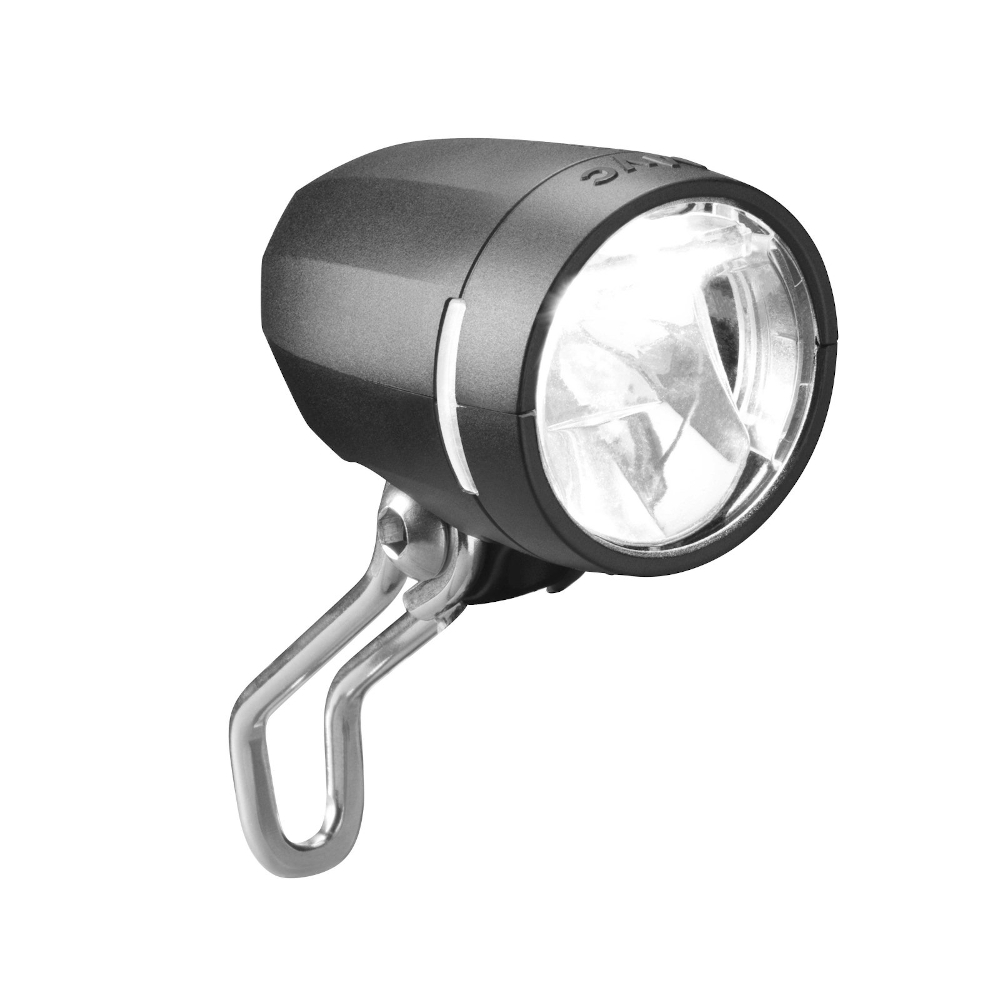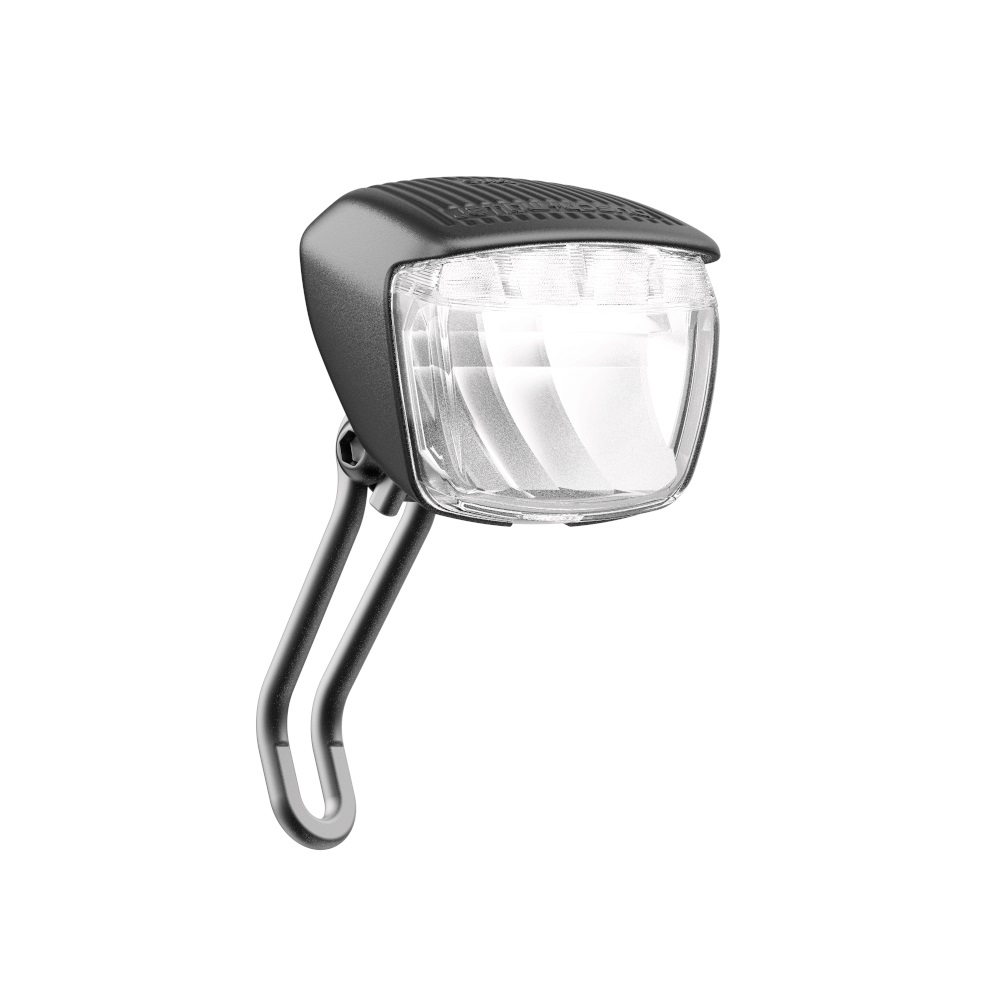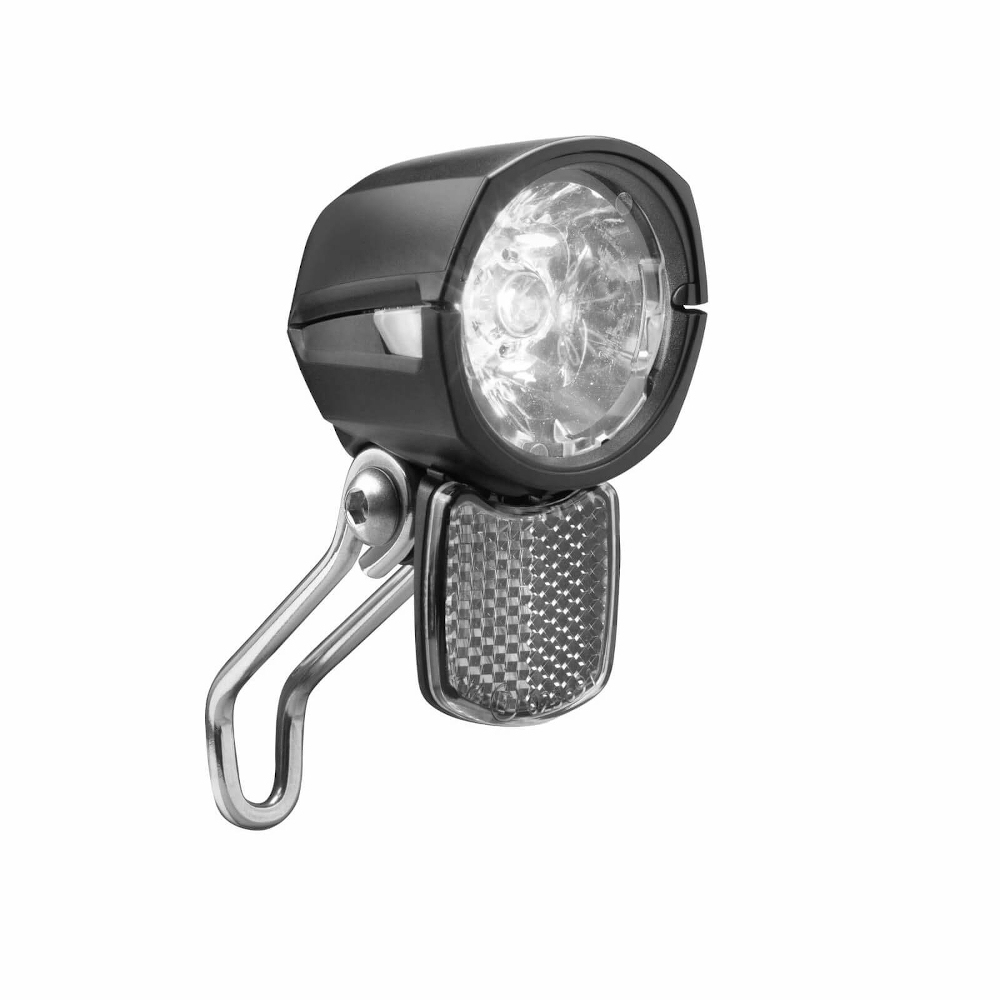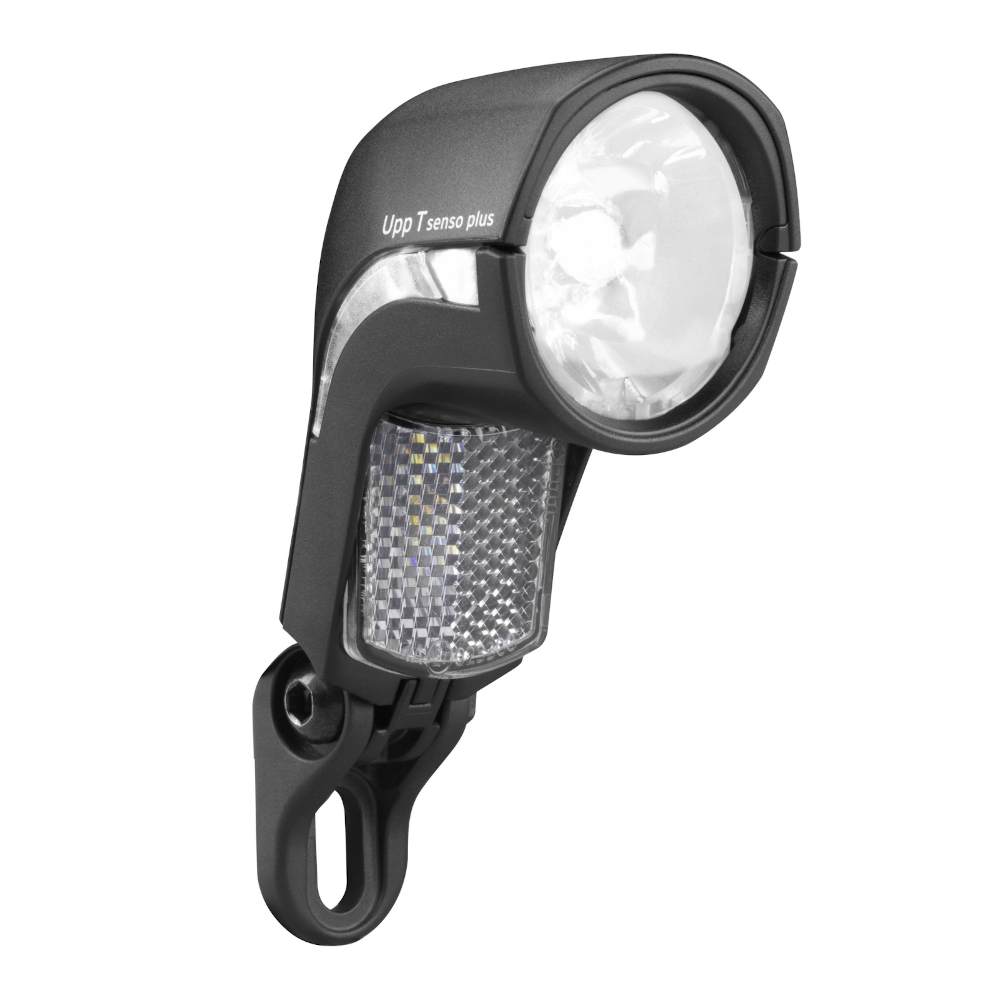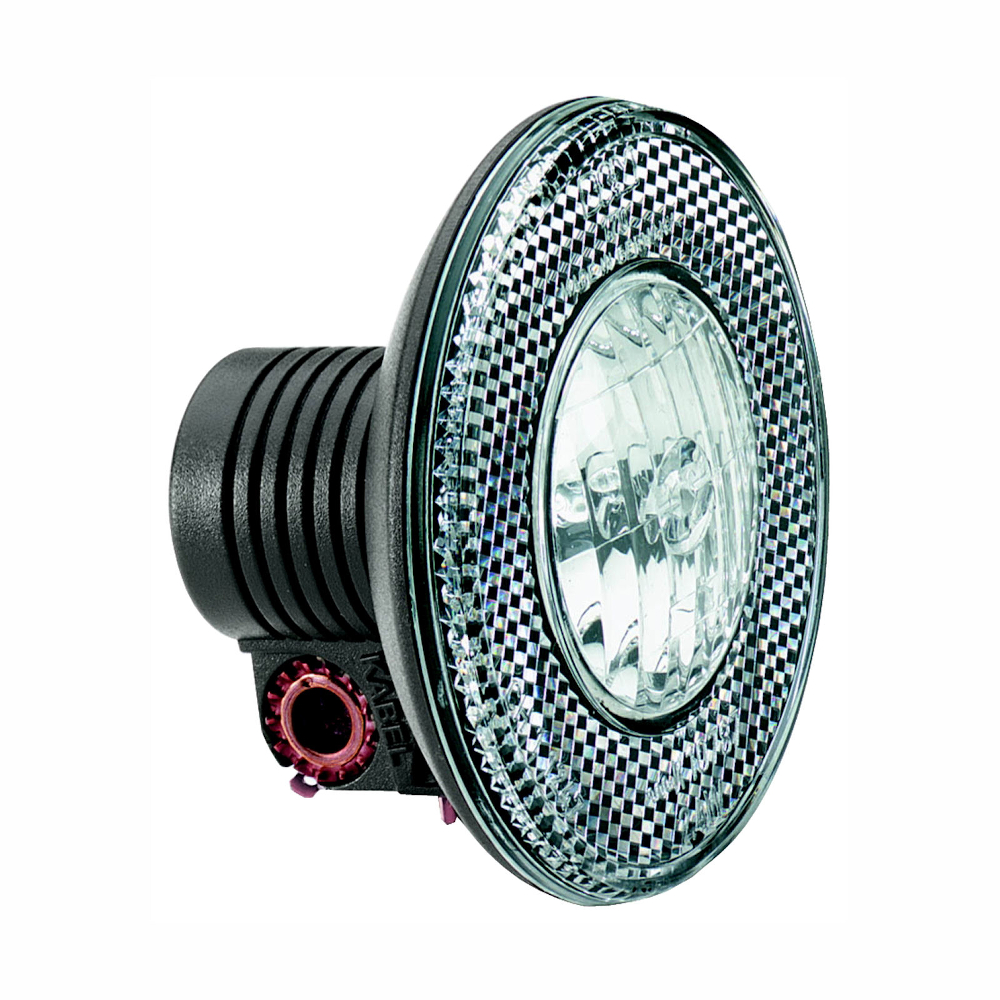Table of contents
Dynamo bike lights: All the information about the battery-free companions Side or hub? Dynamo types and how they work The side rotor dynamo The hub dynamo Bicycle light with dynamo: You should observe these regulations Our tips for the ideal dynamo front light How much do you want to spend?Dynamo bike lights: All the information about the battery-free companions
Always with you, always ready for use: Dynamo-powered bicycle lights are the classic version of power supply on two wheels and reliably ensure visibility in road traffic.
Their biggest advantage is that they do not need to be recharged. As they draw their power from the dynamo, they always start working as soon as you get on your bike. Our Lumotec Briq-S, for example, is perfect for everyday journeys at dusk and in the dark with its even illumination of the road and lateral radiation for even better visibility.
Another plus point: dynamo lights are permanently installed. So you can't forget them at home - and thieves usually give hard-wired lights a wide berth.
In short: If you ride a lot, you ride with a dynamo - whether to work, through the rain or on long day trips. Excellent for longer trips: the LYT Senso Plus with automatic sensor for automatic brightness adjustment and particularly high energy efficiency.
Want to know more about how dynamo lighting works and its features? You can find all the important information here.
Side or hub? Dynamo types and how they work
Dynamos have been responsible for the power supply on bicycles since the late 19th century and have been constantly evolving since their invention - even if the basic principle is still the same: movement becomes energy.
The side rotor dynamo
Until recently, the side-mounted dynamo was the most commonly used variant for generating electricity on bicycles. As the name suggests, the side dynamo is attached to the side of the bike. There it picks up the rotational movement of the tyre with the help of the so-called friction roller and generates energy by means of a magnet and a fixed induction coil inside.
Advantages:
- Inexpensive to purchase
- Easy and uncomplicated to retrofit
- Low weight
Disadvantages:
- Loud in operation
- Sensitive to weather conditions
- Low efficiency
The hub dynamo
With the hub dynamo, a much more effective and robust dynamo variant has become established. The hub dynamo sits where the wheel hub is normally located in the front wheel. The energy is generated by a rotating magnetic field inside.
Advantages:
- Silent operation
- High energy efficiency
- Hardly any maintenance required
Disadvantages:
- Slightly heavier than other variants
- Higher purchase and repair costs
Bicycle light with dynamo: You should observe these regulations
To avoid fines and stay safe on the road, you should make sure that your bicycle lights fulfil the legal requirements. The regulations for proper lighting on bicycles are set out in Section 67 of the German Road Traffic Licensing Regulations (StVZO). It states:
- Bicycle front lights may be operated by dynamo, rechargeable battery or battery.
- The front lighting must consist of at least one headlight with white light.
- The headlight must be glare-free and must not flash.
- The lighting intensity must be at least 10 lux.
- The K test mark, recognisable by the wavy line with the letter K and a number, is a prerequisite for road approval.
If you decide in favour of a dynamo front light from Busch + Müller, you don't need to worry about road approval: All our products fulfil the legal standards and are approved for road traffic.
Our tips for the ideal dynamo front light
We know: Choosing the right dynamo light can be difficult. Even if you are visibly better on the road with all of our front lights, each one has its own strengths. The following questions will therefore help you to find out which model is right for you.
- How bright should your front lights be?
More lux, more visibility? Sounds obvious - but you shouldn't overdo it. In the city, 30 to 50 lux is all you need to be safe on the road. In the countryside, it can be a little brighter - we recommend 70 to 100 lux.
What additional functions should your dynamo light have?
Of course, you can get front lights from us that simply light up the road ahead. However, many of our models have additional functions that make cycling more pleasant and safer.
For example
- Automatic sensor: This means that your dynamo light switches on and off automatically depending on the light conditions (for example, our "Cycling" test winner IQ-XS
- Parking light: Normally, a dynamo front light switches off as soon as you stop. Not so with the parking light function: Here, the light stays on for a few more minutes so that you are still clearly visible - for example when stopping at traffic lights.
- Close-range illumination: Illuminates the area directly in front of your front wheel. This allows you to react even better to bumps and small obstacles in the dark.
- High beam function: At the touch of a button, you can activate the high beam for particularly dark sections of road, e.g. with our IQ-XL Highbeam headlights.
- Daytime running light: This makes you much safer on the road, even in bright light, as additional signalling LEDs make you more visible to other road users (e.g. with the popular IQ-X).
How much do you want to spend?
Depending on your budget, there are various headlight models to choose from. You can get our solid BASIC model for less than 20 euros. Dynamo lights with higher performance and some additional functions are available from 30 to approx. 50 euros. Our high-end models start at around 90 euros - but also offer the highest lighting quality and the full programme of additional functions.
